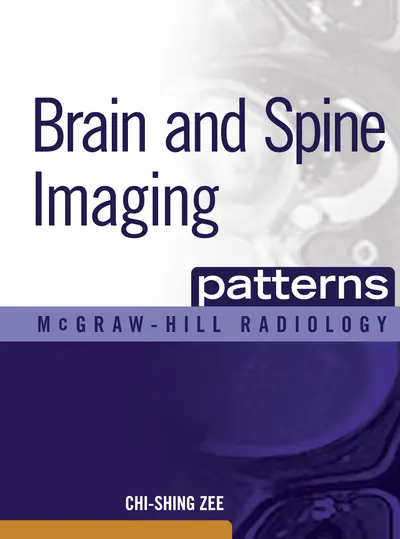My Account Details

ISBN10: 0071465413 | ISBN13: 9780071465410

Step 1 . Download Adobe Digital Editions to your PC or Mac desktop/laptop.
Step 2. Register and authorize your Adobe ID (optional). To access your eBook on multiple devices, first create an Adobe ID at account.adobe.com. Then, open Adobe Digital Editions, go to the Help menu, and select "Authorize Computer" to link your Adobe ID.
Step 3. Open Your eBook. Use Adobe Digital Editions to open the file. If the eBook doesn’t open, contact customer service for assistance.
Publisher's Note: Products purchased from Third Party sellers are not guaranteed by the publisher for quality, authenticity, or access to any online entitlements included with the product. Sharpen your diagnostic skills for brain and spine disorders with this unique patterns-based approach to learning Brain and Spine Imaging Patterns presents a systematic approach to understanding one of the most challenging areas of radiologic interpretation. Uniquely organized by various patterns seen on CT, MRI, and plain radiography imaging rather than pathology, the book carefully guides you toward a group of differential diagnoses. You will find an unmatched collection of more than 140 patterns covering: skull defects and lesions; meningeal and sulcal diseases; extracerebral masses; intracerebral masses; mass lesions in the region of the ventricular system; sellar and parasellar masses; vascular legions; lesions in the cortical gray matter, white matter, and deep gray matter; and spinal diseases and lesions. The easy-to-navigate organization of this book is specifically designed for use at the workstation. The concise text, numerous images, and helpful icons facilitate access to essential information and simplify the learning process. Features More than 140 patterns and more than 2500 digital-quality images A strong focus on patterns recognized on MRI, including contrast-enhanced MRI Icons, a grading system depicting the relative frequency of findings from common to rare, and the consistent organization of chapters help to clarify information for at-the-bench consultation Many patterns include a set of “Related Patterns” images, which serve as cross-references to similar patterns for a given disorder Special emphasis on the latest diagnostic modalities includes state-of-the-art depiction of image findings
Foreword
Preface
Acknowledgments
PART I: MAGNETIC RESONANCE IMAGING
Section 1: Brain
1. Skull Defects and Lesions
2. Meningeal and Sulcal Diseases
3. Extracerebral Masses
4. Intracerebral Masses
A. Sypratentorial Intraaxial Masses
B. Infratentorial Intraaxial Masses
5. Mass Lesions in the Region of the Ventricular System
6. Sellar and Parasellar Masses
7. Vascular Lesions
8. Lesions in the Cortical Gray Matter, White Matter, and Deep Gray Matter
Section 2: Spine
9. Spinal Disease
10. Extradural Disease
11. Intradural Extramedullary Lesions
12. Intramedullary Lesions
PART II: COMPUTED TOMOGRAPHY
Section 1: Brain
13. Skull Defects and Lesions
14. Meningeal and Sulcal Diseases
15. Extracerebral Masses
16. Intracerebral Masses
A. Supratentorial Intraaxial Masses
B. Infratentorial Intraaxial Masses
17. Mass Lesions in the Region of the Ventricular System
18. Sellar and Parasellar Masses
19. Vascular Lesions
20. Lesions in the Cortical Gray Matter, White Matter, and Deep Gray Matter
Section 2: Spine
21. Spinal Disease
22. Extradural Lesions
23. Intradural Extramedullary Lesions
PART III: PLAIN RADIOGRAPHY
24. Skull Defects and Lesions
Index
Need support? We're here to help - Get real-world support and resources every step of the way.